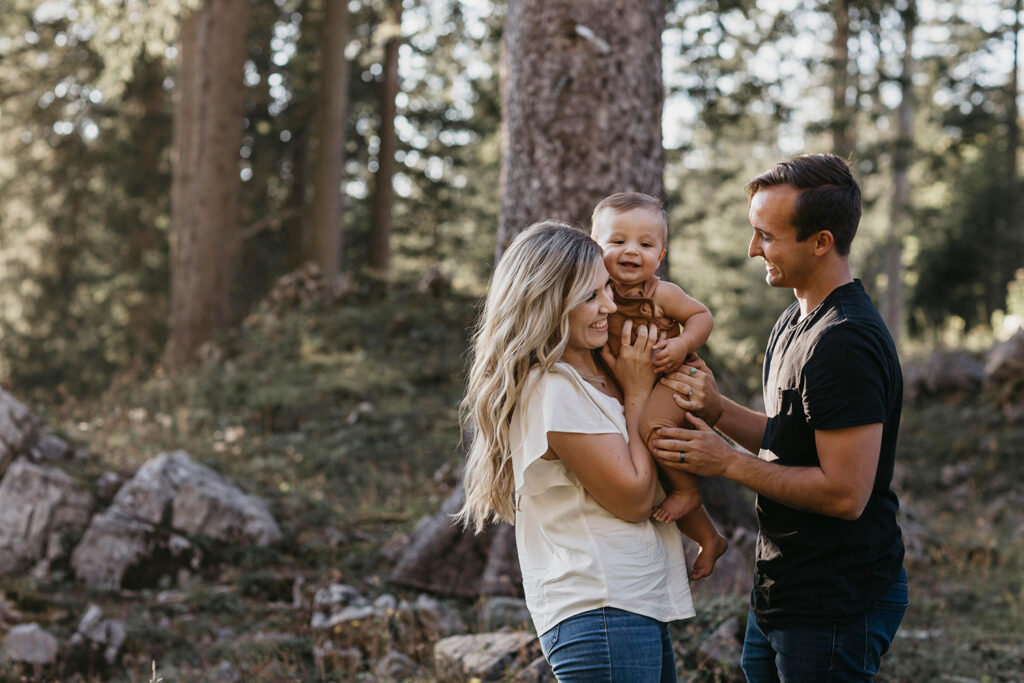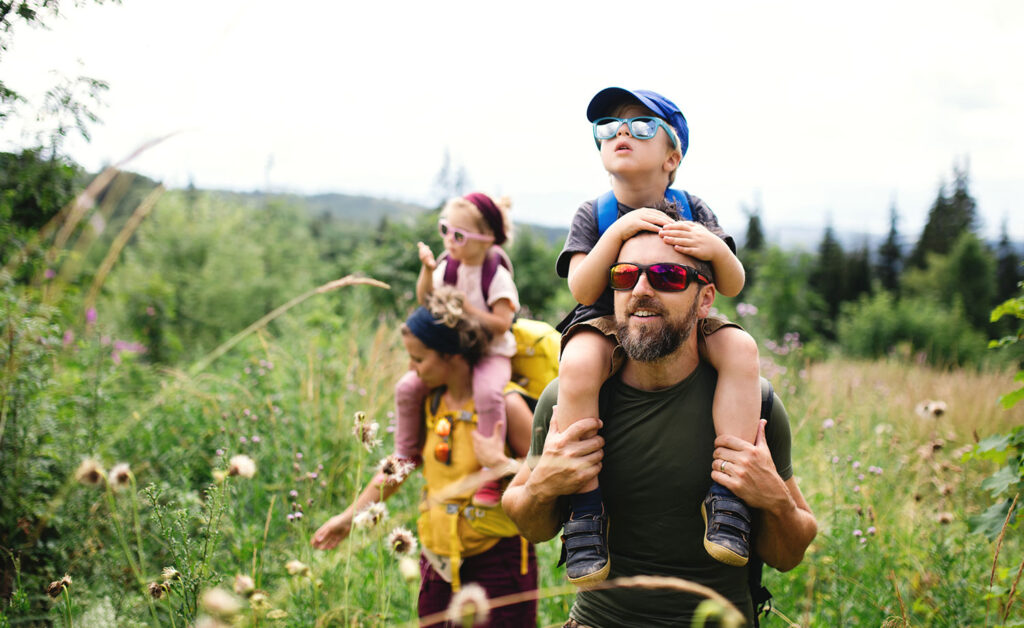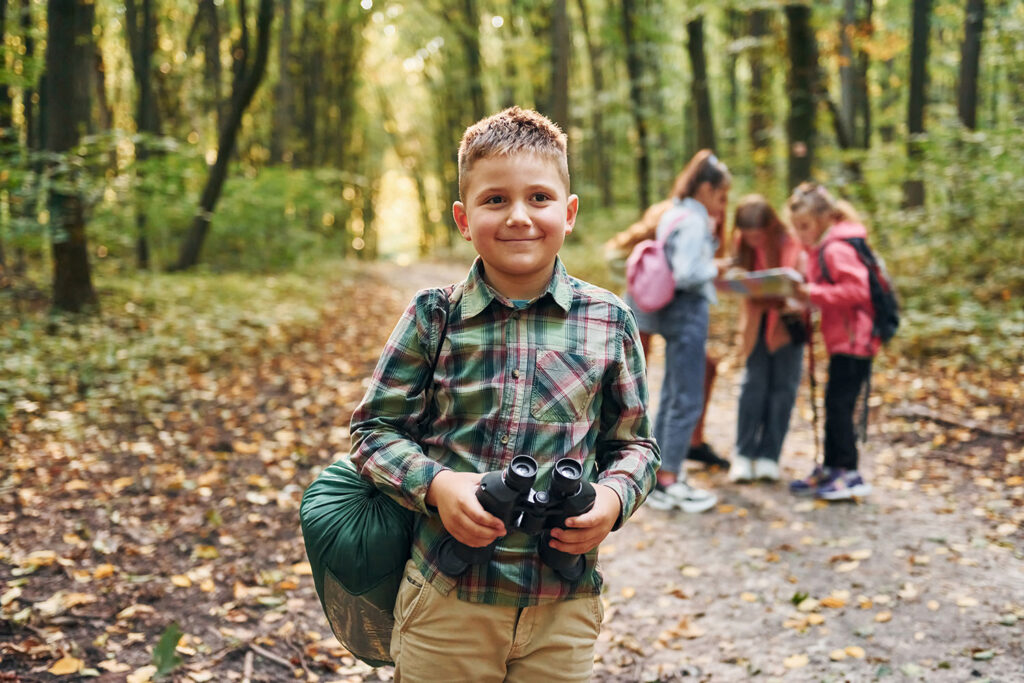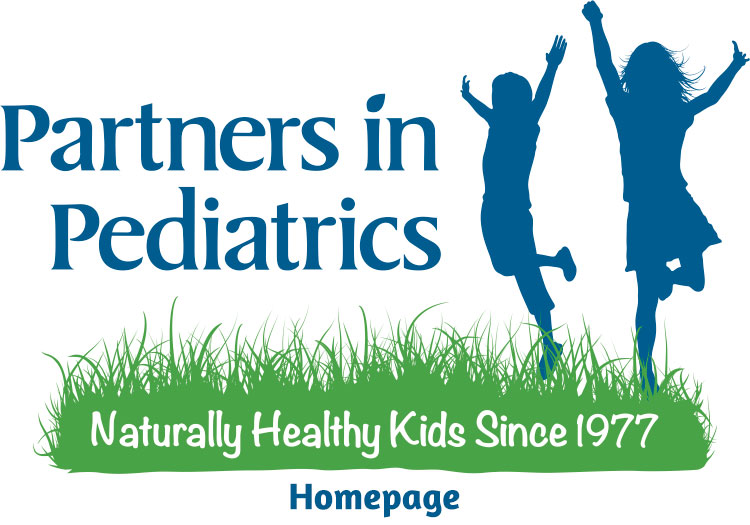If you’re a hiker, you probably already know how to prep yourself. This article is packed full of tips that apply to the newest member of your adventure crew. If you do this well, you can create treasured trail memories at every stage of outdoor development:
- Universal tips when kids tag along
- Hiking with an infant
- Hiking with a toddler
- Hiking with a grade-schooler

Hiking with Kids of Any Age
- Keep them dry, warm and fed: That seemingly kid-perfect spot becomes a miserable place when your child’s most basic needs aren’t met. Children simply aren’t as resilient as adults—even kids who never seem to whine. When they’re warm dry and full, though, kids possess explorer superpowers.
- Keep them hydrated and cool: This is really an extension of the tip above. The ideal drinking container, bottle or reservoir, varies with age; for cooling help when it’s hot out, a spray bottle is handy for ages kid through adult.
- Triple-check the gear list: Family essentials, like a favorite snack, are only part of the picture. Until your child is old enough to be self-sufficient, it falls squarely on you to ensure your group has everything its needs. And please remember sunscreen – especially in the intense sun of Colorado!
- Watch the weather: Nasty conditions can make things uncomfortable, scary or even dangerous for kids, so layer up and be ready to head for home if skies turn dark and stormy.
- Rediscover your inner child: For kids, it truly is the journey, not the destination. Remind yourself of that, then explore with them, one mini marvel at a time.
Hiking with Infants (0–12 months)
The Right Baby Carrier
The choice here isn’t between you and your spouse, it’s front sling vs. backpack, either of which should adjust to fit each parent. Kids need to be swaddled in front until roughly 6 months before graduating to a backpack-style carrier. Read Child Carriers: How to Choose to learn when your baby is ready and what features to consider.
Tips for Hiking with Infants
- Get your child used to a new child carrier before hitting the trail.
- The hiking motion puts most kids to sleep, so hit the trail at naptime to avoid messing with your baby’s sleep cycle.
- Ease into things by limiting first hikes to a couple of hours; be wary of cold, wind and rain, too, because babies aren’t great at regulating body temperature yet.
- Cover your baby with a sun hat that has a brim broad enough to cover the neck.
- If your baby is formula fed, then the powdered form saves weight.
- Pack along a separate clean bottle used only to give extra water.
- Pack plenty of diapers, and enough waste bags to double-seal them when you carry all your soiled diapers out again.
Hiking with Toddlers and Young Kids (1–4 years)

You’re now entering the half carry/half hike years, so adaptability is key. Toddlers want to toddle, so plan on lots of breaks to let them explore small areas in great detail.
Tips for Hiking with Toddlers
- A brightly colored, creature-covered, kid-size water bottle encourages drinking.
- You don’t need boots for a toddler; sneakers are fine. Pack extra socks, though, because puddles beckon and dry feet matter.
- Kids love having gear of their own, so get your toddler a small pack to carry something lightweight like a jacket.
- Always be aware of how far you are from the trailhead because even the unstoppable toddler can tire out and need carrying all the way back.
- When your toddler is riding along, look for relatively flat, hazard-free areas where you can turn them loose.
- Embrace dirt because your toddler will; only change to the spare clothes when you absolutely have to.
Transitioning Out of the Child Carrier
Your preschooler (ages 3–5), can still ride in the carrier until reaching about 40 pounds.
Hiking with Grade-Schoolers (5–12 years)
Trail Safety Rules for Grade-Schoolers
- When kids first start to hike on their own two feet, the rule is always stay within sight of Mom, Dad or other responsible adult.
- After the kids have been hiking with you for a few years, the rule can change to “hike ahead for short stretches, then stop and wait until you see your adult again.” Also: “Never hike past a trail sign.”
- Kids must carry a safety whistle (many packs have them built into a strap buckle).
- Kids must know what to do when lost: Stop, stay put and blow the whistle in bursts of three.

Tips for Hiking with Grade-Schoolers
- Rather than peaks or views, think about destinations with kid-size fun: where they can skip rocks or clamber onto boulders, for example.
- Involve them in the planning and preparation: everything from picking their trail to packing their pack.
- This is a great age to let kids switch from a water bottle to a reservoir; your child is strong enough to carry one and most kids love to sip on the run.
- Kids bore quickly, so be creative to keep things fun: Spot blazes on trees, count squirrels, sing songs and make up verses, hold twig races in creeks. Geocaching is another great option for keeping kids engaged; or go low tech and incorporate a scavenger hunt into your hike.
- For slowpoke kids: Employ lots of mini destinations, like a giant tree or a mossy rock, where they get a snack break.
- Bring along a friend and get double the fun. Having non-sibling friends along keeps the energy up and cuts down on the complaining.
- Teach kids Leave No Trace rules early on; then see how long it takes for them to “catch you” messing up.
- Teach kids map reading early on: Start with something simple like a nature-trail map; when they’re older get them their own topo maps.
Final Thoughts
Hiking with kids is an amazing adventure. It can be a wonderful way to rediscover your own inner child, as well as introduce your own kids to the wonders of nature – and the joys of physical exercise. As integrative, holistic pediatricians, we firmly believe in the power of experiences, too – and getting out in the beautiful mountains that surround Denver is a very powerful experience. Learning to live in harmony with nature is one of the most valuable lessons a child can learn; it can change them physically, mentally and spiritually.
Note: This blog post is largely a reproduction of this post by REI.



Leave a Reply